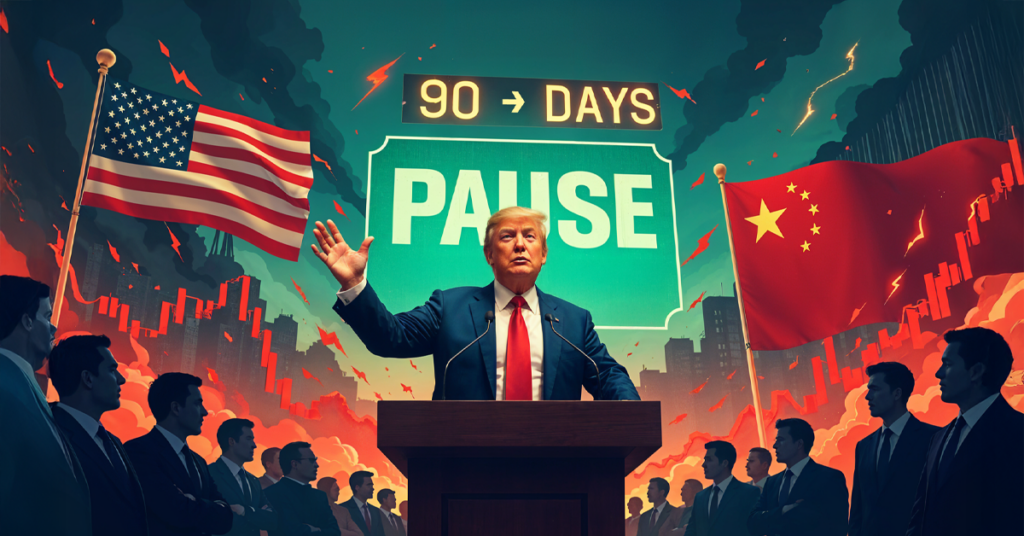Fundamental Analysis: Weekly Update – April 14, 2025

The ball is now in the U.S. court after Beijing fired back raising tariffs on its imports to 125% in response to Donald Trump’s latest move to hike duties on Chinese goods to 145%, escalating an already volatile trade war that’s shaking global supply chains. The White House had earlier intensified pressure on China – America’s second-largest trading partner – while easing tariff threats on dozens of other countries. China’s countermeasures, set to take effect over last weekend, deepen a standoff that has rattled U.S. equities and undermined investor confidence. Despite Trump’s 90-day pause on sweeping “Liberation Day” tariffs and a similar move by the EU, markets remain unsettled. Still, Trump and his top officials sought to calm market jitters, with Treasury Secretary Scott Bessent expressing optimism that the U.S. would reach a “place of great certainty” once new trade agreements are secured.
The Trump administration has carved out a significant loophole in its latest round of reciprocal tariffs, granting exemptions for smartphones, computers, and other electronics. The move offers a major – if possibly temporary – relief for global tech giants like Apple. The pause is likely to be met with relief by consumers and investors. It also marks a significant victory for major tech firms that have recently made headline-grabbing investment promises in the U.S. under Trump’s watch. However, the relief is narrowly focused, with many other Chinese goods still subject to steep duties. Trump has suggested more specific updates may follow on Monday, in which the market may look for more reassurance.
Central banks across the globe are stepping into the spotlight amid tariff standoff. On Wednesday, the Bank of Canada is expected to hold interest rates steady, wary of stoking inflation amid trade tensions with the U.S. Meanwhile, attention turns to Frankfurt, where the European Central Bank is widely expected to cut rates the very next day. With the Federal Reserve sidelined until its May 7 meeting, the burden of calming jittery investors now falls to policymakers in Ottawa and Frankfurt. ECB President Christine Lagarde acknowledged the risks last week, emphasizing that the bank is monitoring the situation closely and stands ready to act, reminding markets that price stability and financial stability are inseparable.
Oil prices remain on shaky ground despite a drop in OPEC production during March, just ahead of the group’s anticipated output increase. Key members faced fresh supply disruptions and intensifying geopolitical pressure. At the same time, renewed U.S. efforts under President Donald Trump to stifle oil flows from Iran and Venezuela led to additional production declines. Each of the three countries – Nigeria, Iran, and Venezuela – saw output fall by approximately 50,000 barrels per day. Still, Nigeria remains slightly above its OPEC+ quota, while Gabon continues to be the bloc’s least compliant producer. As OPEC+ begins to cautiously scale back its previous output cuts, the outlook remains uncertain. Much will depend on how successful Washington is in limiting exports from Tehran and Caracas.







